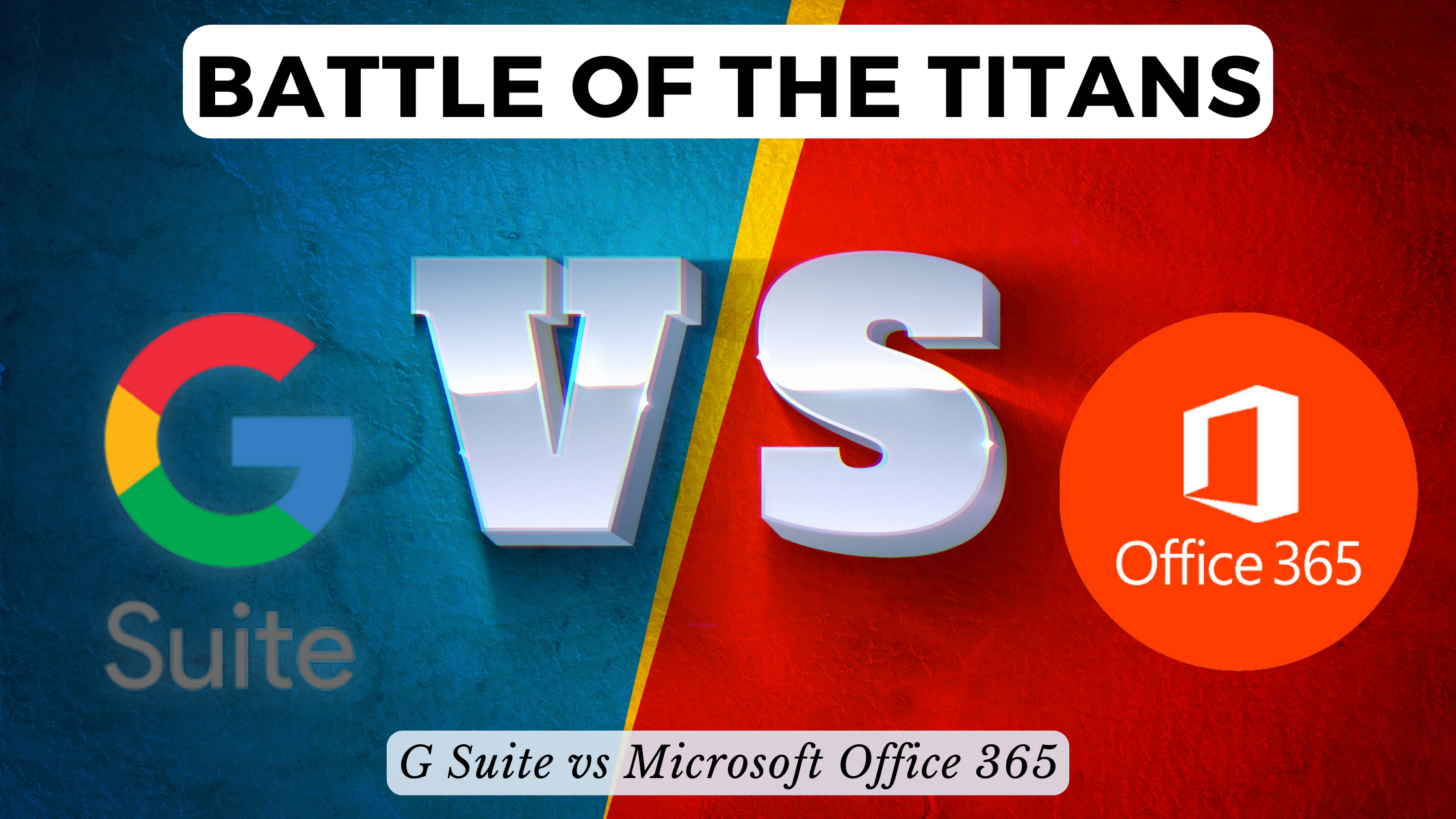Battle of the Titans: G Suite vs Microsoft Office 365
- E-Learning Platforms Worksuite


Battle of the Titans: G Suite vs Microsoft Office 365
In the ever-evolving landscape of productivity suites, two behemoths stand out: G Suite and Microsoft Office 365. Choosing between them can be a pivotal decision for businesses, impacting collaboration, communication, and overall workflow efficiency. This comprehensive guide aims to dissect the strengths, weaknesses, and nuances of G Suite and Microsoft Office 365 to help businesses make an informed decision.
G Suite: Unleashing the Power of Cloud Collaboration
1. Gmail:
G Suite’s Gmail is a juggernaut in the email realm, offering an intuitive interface, powerful search capabilities, and seamless integration with other G Suite apps.
2. Google Drive:
The collaborative prowess of Google Drive simplifies document sharing and real-time editing, fostering a dynamic work environment.
3. Google Workspace:
With tools like Google Docs, Sheets, and Slides, G Suite enhances collaboration, allowing teams to create, edit, and share documents effortlessly.
4. Security and Compliance:
G Suite prioritizes security, providing robust features like two-factor authentication and data loss prevention to safeguard sensitive information.
Microsoft Office 365: Empowering Productivity Beyond Boundaries
1. Microsoft Outlook:
Outlook in Office 365 is a stalwart for email management, offering a familiar interface, efficient organization, and integration with other Office apps.
2. OneDrive:
OneDrive facilitates seamless file storage and sharing, promoting accessibility and collaboration across the Microsoft ecosystem.
3. Microsoft 365 Apps:
Word, Excel, PowerPoint, and more – the Microsoft 365 suite offers powerful desktop applications complementing their online counterparts.
4. Security and Compliance:
Office 365 ensures data protection through features like threat intelligence and information governance, catering to enterprise-level security needs.
G Suite vs. Microsoft Office 365: The Showdown
1. Collaboration Features:
G Suite takes the lead in real-time collaboration, while Office 365 excels in providing a seamless offline experience with robust desktop applications.
2. Cost Considerations:
The pricing models vary, with G Suite often offering a more straightforward per-user pricing structure, while Office 365 provides a range of plans catering to diverse business needs.
3. Integration Capabilities:
G Suite seamlessly integrates with third-party apps, emphasizing flexibility. Meanwhile, Office 365 boasts unparalleled integration within the Microsoft ecosystem, enhancing workflow cohesion.
4. User Interface:
G Suite’s interface is known for simplicity and ease of use, catering to users who prefer streamlined experiences. Office 365, with its familiar ribbon interface, appeals to those accustomed to traditional desktop applications.
SaaS Products for Enhanced Decision-Making
1. Subscribed.FYI – Simplify SaaS Management
Subscribed.FYI provides valuable insights into the world of SaaS tools, aiding businesses in managing their subscription stack efficiently.
2. Asana – Streamlined Project Management
Asana is a powerful project management tool, facilitating collaboration and task tracking, integrating seamlessly with G Suite and Office 365.
3. Trello – Visual Collaboration Tool
Trello’s visual boards and cards make project management intuitive, integrating with both G Suite and Office 365.
4. Zapier – Automation Made Easy
Zapier connects various apps, automating workflows. It acts as a bridge between G Suite and Office 365, enhancing cross-platform automation.
5. Slack – Team Communication Hub
Slack simplifies team communication, integrating with both G Suite and Office 365, ensuring seamless collaboration.
Conclusion
In the battle between G Suite and Microsoft Office 365, there’s no one-size-fits-all solution. The choice depends on specific business needs, preferences, and existing workflows. By diving into the nuances of each suite, businesses can make a strategic decision that aligns with their goals, ensuring a productive and collaborative future.
Transitioning from the G Suite vs. Office 365 dilemma to efficient SaaS management is seamless with Subscribed.FYI. By understanding the subscription landscape, businesses can optimize costs and enhance productivity.
Relevant Links:





